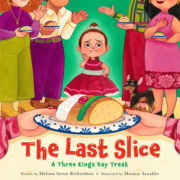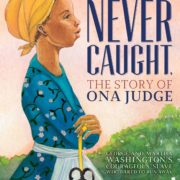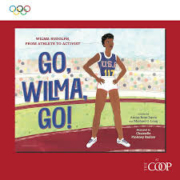Freewater by Amina Luqman-Dawson and Standing in the Need of Prayer by Carole Boston Weatherford and Frank Morrison
Awards season is here — not the Grammys or the Oscars, but the American Library Association’s Youth Media Awards.
Every January, the ALA announces the most esteemed books of the previous year published for young readers:
• The Newbery Medal is awarded to the author of the most distinguished contribution to American Literature for children.
• The Caldecott Medal is awarded to the artist of the most distinguished American picture book for children.
• The Coretta Scott King Award Author Award and Illustrator Award are given to an outstanding young adult or children’s book by a Black author and illustrator that reflect the Black experience.
This year, both the Coretta Scott King Author Award and the Newbery Medal were awarded to Amina Luqman-Dawson’s “Freewater,” which tells the story of 12-year-old Homer and his sister Ada as they escape from the Southerland plantation.
The children, who were born into slavery, leave in the night with their mother. When their mother is caught, they must figure out how to survive on their own. While escaping deeper into the swamps, they encounter Freewater, a community of formerly enslaved people and freeborn children.
Homer experiences fear and excitement in equal measure. He misses and worries about his mother. Once he realizes she is not following behind, he devotes most of his time to crafting ways to rescue her. At the same time, he and his sister learn swamp survival skills from people like Daria, Solomon, and Sanzi and Juna, freeborn sisters who have only known life in Freewater.
Luqman-Dawson’s immersive world building paints a picture of Freewater through its sounds, its flora and fauna, and its people. Though much of the story is told from Homer’s perspective, readers often hear from Sanzi, as she yearns for adventures outside the swamp community
Freewater, at its core, is a story of freedom and resistance and what a life built on those things can look like.
In her acknowledgments, Luqman-Dawson talks of how little is known of life inside maroon communities. Her imaginings, though, are rooted in anthropological evidence.
The research and work she put into developing the characters and the setting is incredible and essential. Because of Homer, Ada, and the other characters, readers are provided with a more full glimpse of what life was like for both the freeborn and formerly enslaved individuals in these communities.
Flashbacks and the perspective of the slave owner’s daughter bring readers back to the Southerland plantation often. Though the author does not gloss over the horrific nature of slavery, it is presented in a way that will be digestible for upper elementary/early middle school readers.
The Coretta Scott King Illustrator Award was given to Frank Morrison’s “Standing in the Need of Prayer: A Modern Retelling of the Classic Spiritual.” Morrison’s illustrations in this book are incredible.
The cover itself is rife with symbolism and emotion. It shows a young Black girl, her face lifted toward the sky and eyes closed, with her hands raised in prayer. In her Afro, you can see reflectionlike paintings of Martin Luther King Jr., Ruby Bridges, the March on Washington, a cotton flower and Florence Griffith Joyner.
Morrison uses his illustrations to show vivid depictions of glimpses of African American history. Award-winning author Carole Boston Weatherford adapts the classic African American spiritual to include bits of Black history as well, from the “freedmen seeking kin at Emancipation” to “the first Black students walking into all-white classes” and “record-breaking athletes.”
The juxtaposition of the front and back endpapers alone tell the story of both Weatherford’s words and Morrison’s other illustrations throughout the book. The opening pages show a young enslaved person standing on the steps of a ship, hands chained behind their back before a whip-wielding enslaver. Conversely, the back endpapers show a curly-haired Black child, shown a few pages prior, walking into the sunset, protest sign slung over a shoulder with a hand casually placed in a pocket.
My favorite illustrations are the ones that, like the cover, are big, bold, and tell multiple stories or facets of a story at once.
I love the image of athlete-activist Colin Kapernick that takes up nearly an entire page. Its grand yet humanizing qualities call to mind the art of Kadir Nelson, another award-winning Black illustrator.
On the aforementioned double spread, a somber Kapernick looks down at a football field, his Afro taking up three-quarters of the page. In his hair, you can see a smaller reflection of Olympic runner Florence Griffith Joyner in motion.
Overall, “Standing in the Need of Prayer” is a hopeful book. Though it certainly confronts hard history, it does so while looking forward.










